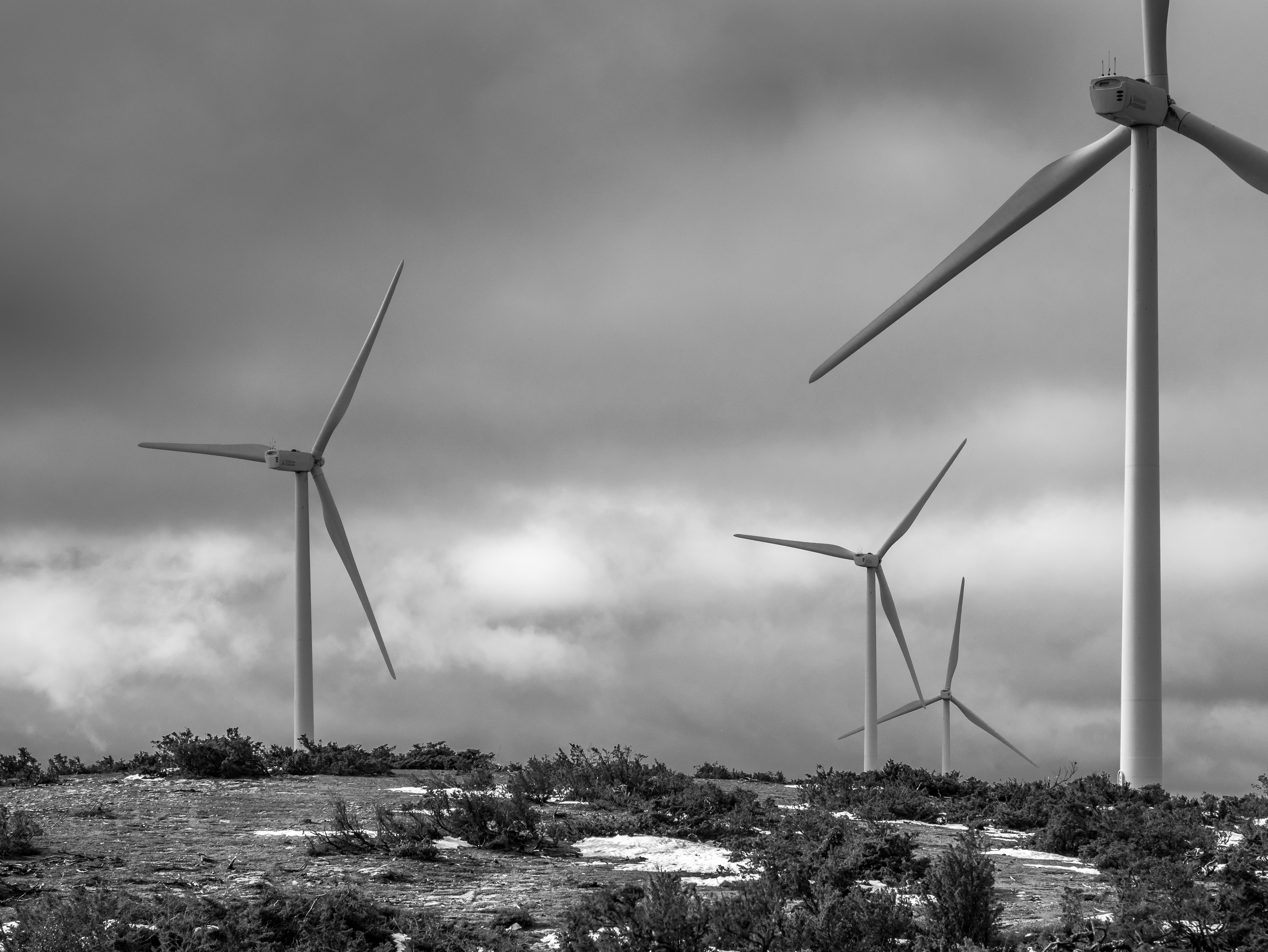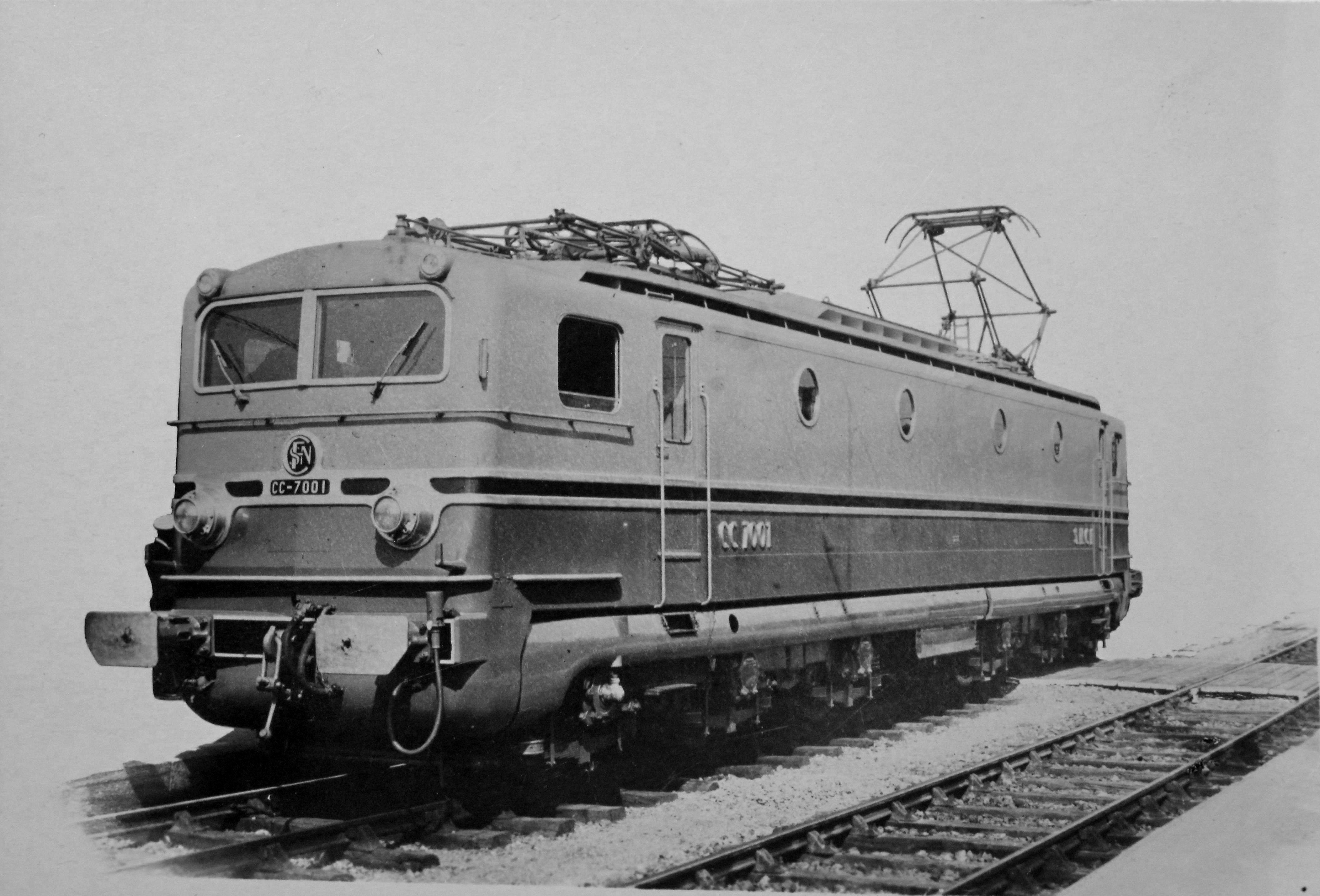|
MIFERMA Class CC 01-21
The MIFERMA Class CC 01-21 diesel locomotives were built by Alsthom in France between 1961 and 1965. The locomotives had been commissioned by the ''Sociéte Anonyme des Mines de Fer de Mauritanie'' (MIFERMA), then the owner of the Mauritania Railway, which, since its completion in 1963, has connected the iron ore mine in Zouerate with the port of Nouadhibou, Mauritania. The CC Class 01-21 locomotives were based upon the SNCF Class CC 65000, a French passenger diesel locomotive also built by Alstom. Like the CC 65000s, the MIFERMA locomotives were fitted with two diesel engines. However, the MIFERMA locomotives had more powerful versions of the engines. They were also equipped with a roof mounted "skyline casing", which housed special filtration equipment, to deal with the unusually sandy and dusty Saharan atmospheric conditions. Another change which made them differ from the CC 65000s was their use of different bogie trucks (these being related to the trucks used on the CC 1 ... [...More Info...] [...Related Items...] OR: [Wikipedia] [Google] [Baidu] |
Alstom
Alstom SA is a French multinational rolling stock manufacturer operating worldwide in rail transport markets, active in the fields of passenger transportation, signalling, and locomotives, with products including the AGV, TGV, Eurostar, Avelia and New Pendolino high-speed trains, in addition to suburban, regional and metro trains, and Citadis trams. Alsthom (originally Als-Thom) was formed by a merger between Compagnie Française Thomson-Houston and the electric engineering division of Société Alsacienne de Constructions Mécaniques in 1928. Significant later acquisitions included the Constructions Electriques de France (1932), shipbuilder Chantiers de l'Atlantique (1976), and parts of ACEC (Belgium, late-1980s). A merger with parts of the General Electric Company (UK) formed GEC Alsthom in 1989. Throughout the 1990s, the company expanded its holdings in the rail sector, via the acquisition of German rolling stock manufacturer Linke-Hofmann-Busch and Italian rail signall ... [...More Info...] [...Related Items...] OR: [Wikipedia] [Google] [Baidu] |
SNCF Class CC 14000
The Class CC 14000 were electric locomotives operated by SNCF in France. They were one of four classes, together with the BB 12000, BB 13000 and CC 14100 classes, that formed an experimental group for studying the practicality of the new French electrification. It was used in freight service along the Lille – Thionville line. They were nicknamed ''Fer à repasser'' (electric irons). History In this heavily industrialized area of the country with steep grades, the railway would pull heavy freight trains along the North-East line using SNCF 150.X steam locos, often requiring pusher locomotives to help move the trains along. The SNCF wanted to use only one locomotive on these trains and began studying the use of electric locomotives on the line. 25 kV 50 Hz electrification Around 1950, France began a program of electrification with 25 kV at the 'industrial' frequency of 50 Hz. An experimental program was begun with four similar locomotive designs, one ... [...More Info...] [...Related Items...] OR: [Wikipedia] [Google] [Baidu] |
Co′Co′ Locomotives
Co-Co is the wheel arrangement for diesel or electric locomotives with two six-wheeled bogies with all axles powered, with a separate traction motor per axle. The equivalent UIC classification (Europe) for this arrangement is Co′Co′, or C-C for AAR (North America). Use Co-Cos are most suited to freight work as the extra wheels give them good traction. They are also popular because the greater number of axles results in a lower axle load to the track. History The first mainline diesel-electric locomotives were of Bo-Bo arrangement. As they grew in power and weight, from 1937 the EMD E-units used an A1A-A1A layout with six axles to reduce axle load, but only four of them were powered. After WWII, the British LMS ordered two prototype locomotives with some of the first Co-Co arrangements. The first C-C design recorded was a narrow-gauge Hornsby opposed-piston Hornsby-Akroyd-engined locomotive of 1903 for the Chattenden and Upnor Railway. There was a two-speed mec ... [...More Info...] [...Related Items...] OR: [Wikipedia] [Google] [Baidu] |
Alstom Locomotives
Alstom SA is a French multinational rolling stock manufacturer operating worldwide in rail transport markets, active in the fields of passenger transportation, signalling, and locomotives, with products including the AGV, TGV, Eurostar, Avelia and New Pendolino high-speed trains, in addition to suburban, regional and metro trains, and Citadis trams. Alsthom (originally Als-Thom) was formed by a merger between Compagnie Française Thomson-Houston and the electric engineering division of Société Alsacienne de Constructions Mécaniques in 1928. Significant later acquisitions included the Constructions Electriques de France (1932), shipbuilder Chantiers de l'Atlantique (1976), and parts of ACEC (Belgium, late-1980s). A merger with parts of the General Electric Company (UK) formed GEC Alsthom in 1989. Throughout the 1990s, the company expanded its holdings in the rail sector, via the acquisition of German rolling stock manufacturer Linke-Hofmann-Busch and Italian rail signal ... [...More Info...] [...Related Items...] OR: [Wikipedia] [Google] [Baidu] |
History Of Rail Transport In Mauritania
:''This article is part of the history of rail transport by country series'' The history of rail transport in Mauritania began in 1940, with the commencement of preparatory work for the construction of the Mauritania Railway, a single track, standard gauge line connecting a then proposed iron mine in Zouerate with the port of Nouadhibou, via Fderik and Choum. Construction of the line began in 1961 and was completed in 1963. Geography The line follows the northern border of Mauritania. Under the influence of the French colonial administration of what was then French West Africa, it was designed and built to European standards by the joint stock ''Societe Anonyme des Mines de Fer de Mauritanie'' (MIFERMA). Since 1974, it has been owned by the parastatal ''Societe Nationale Industrielle et Minière'' (SNIM). At about from Nouadhibou, the Mauritania Railway originally passed through the long and steeply graded Choum Tunnel, to avoid passing through part of the Río de Oro te ... [...More Info...] [...Related Items...] OR: [Wikipedia] [Google] [Baidu] |
SNIM Alsthom CC05 1994 01
The Mauritania Railway is the national railway of Mauritania. Construction of the line began in 1960, with it opening in 1963. It consists of a single, railway line linking the iron mining centre of Zouérat with the port of Nouadhibou, via Fderik and Choum. The state agency ''Société Nationale Industrielle et Minière'' (National Mining and Industrial Company, SNIM) controls the railway line. Since the closure of the Choum Tunnel, a section of the railway cuts through the Polisario Front- controlled part of the Western Sahara (). History The line was a success and provided a major portion of Mauritania's GDP; as a result the line was nationalised in 1974. Following Mauritania's annexation of southern Western Sahara in 1976, the line came under constant attack by Polisario militia, effectively putting the line out of use and thereby crippling Mauritania's economy. This played a major role in prompting the army to overthrow Mauritanian president Moktar Ould Daddah in 1978 ... [...More Info...] [...Related Items...] OR: [Wikipedia] [Google] [Baidu] |
EMD SD40-2
The EMD SD40-2 is a C-C diesel-electric locomotive built by EMD from 1972 to 1989. The SD40-2 was introduced in January 1972 as part of EMD's '' Dash 2'' series, competing against the GE U30C and the ALCO Century 630. Although higher-horsepower locomotives were available, including EMD's own SD45-2, the reliability and versatility of the SD40-2 made it one of the best-selling models in EMD's history, edged only by the GP9, and the standard of the industry for several decades after its introduction. The SD40-2 was an improvement over the SD40, with modular electronic control systems similar to those of the experimental DDA40X. Peak production of the SD40-2 was in the mid-1970s. Sales of the SD40-2 began to diminish after 1981 due to the oil crisis, increased competition from GE's Dash-7 series and the introduction of the EMD SD50, which was available concurrently to late SD40-2 production. The last SD40-2 delivered to a United States railroad was built in July 1984, with pro ... [...More Info...] [...Related Items...] OR: [Wikipedia] [Google] [Baidu] |
Electro-Motive Diesel
Progress Rail Locomotives, doing business as Electro-Motive Diesel (EMD), is an American manufacturer of diesel-electric locomotives, locomotive products and diesel engines for the rail industry. The company is owned by Caterpillar through its subsidiary Progress Rail. Electro-Motive Diesel traces its roots to the Electro-Motive Engineering Corporation, a designer and marketer of gasoline-electric self-propelled rail cars founded in 1922 and later renamed Electro-Motive Company (EMC). In 1930, General Motors purchased Electro-Motive Company and the Winton Engine Co., and in 1941 it expanded EMC's realm to locomotive engine manufacturing as Electro-Motive Division (EMD). In 2005, GM sold EMD to Greenbriar Equity Group and Berkshire Partners, which formed Electro-Motive Diesel to facilitate the purchase. In 2010, Progress Rail completed the purchase of Electro-Motive Diesel from Greenbriar, Berkshire, and others. EMD's headquarters, engineering facilities and parts manufacturing ... [...More Info...] [...Related Items...] OR: [Wikipedia] [Google] [Baidu] |
Parastatal
A state-owned enterprise (SOE) is a government entity which is established or nationalised by the ''national government'' or ''provincial government'' by an executive order or an act of legislation in order to earn profit for the government, control monopoly of the private sector entities, provide products and services to citizens at a lower price and for the achievement of overall financial goals & developmental objectives in a particular country. The national government or provincial government has majority ownership over these ''state owned enterprises''. These ''state owned enterprises'' are also known as public sector undertakings in some countries. Defining characteristics of SOEs are their distinct legal form and possession of financial goals & developmental objectives (e.g., a state railway company may aim to make transportation more accessible and earn profit for the government), SOEs are government entities established to pursue financial objectives and develo ... [...More Info...] [...Related Items...] OR: [Wikipedia] [Google] [Baidu] |
SNCF Class CC 7100
SNCF's CC 7100 class are part of a series of electric locomotives built by Alsthom. The prototype 'CC 7000' (7001 & 7002) were built in 1949 and the production series locomotives CC 7101-CC 7158 followed during 1952–1955. Two of the class are notable for setting world rail speed records: CC 7121 reaching on 21 February 1954, and CC 7107 reaching on 28/29 March 1955. History The CC 7100 class were the first SNCF high-speed locomotives in which all the axles were motorized, i.e. with powered bogies rather a rigid frame. As delivered their top speed was . The CC 7100 were contemporaries of the 2D2 9100 for express passenger service on the PLM. From the outset it was apparent that bogie locomotives represented the future and so only a third of the anticipated 2D2s were built, in favour of the CC 7100. Speed records During the 1950s, SNCF's experimental investigations into high-speed rail saw some CC 7100 class locomotives specially-modified for operation at speeds far higher ... [...More Info...] [...Related Items...] OR: [Wikipedia] [Google] [Baidu] |
Bogie
A bogie ( ) (in some senses called a truck in North American English) is a chassis or framework that carries a wheelset, attached to a vehicle—a modular subassembly of wheels and axles. Bogies take various forms in various modes of transport. A bogie may remain normally attached (as on many railroad cars and semi-trailers) or be quickly detachable (as the dolly in a road train or in railway bogie exchange); it may contain a suspension within it (as most rail and trucking bogies do), or be solid and in turn be suspended (as most bogies of tracked vehicles are); it may be mounted on a swivel, as traditionally on a railway carriage or locomotive, additionally jointed and sprung (as in the landing gear of an airliner), or held in place by other means (centreless bogies). In Scotland, the term is used for a child’s (usually home-made) wooden cart. While ''bogie'' is the preferred spelling and first-listed variant in various dictionaries, bogey and bogy are also used. Rai ... [...More Info...] [...Related Items...] OR: [Wikipedia] [Google] [Baidu] |




